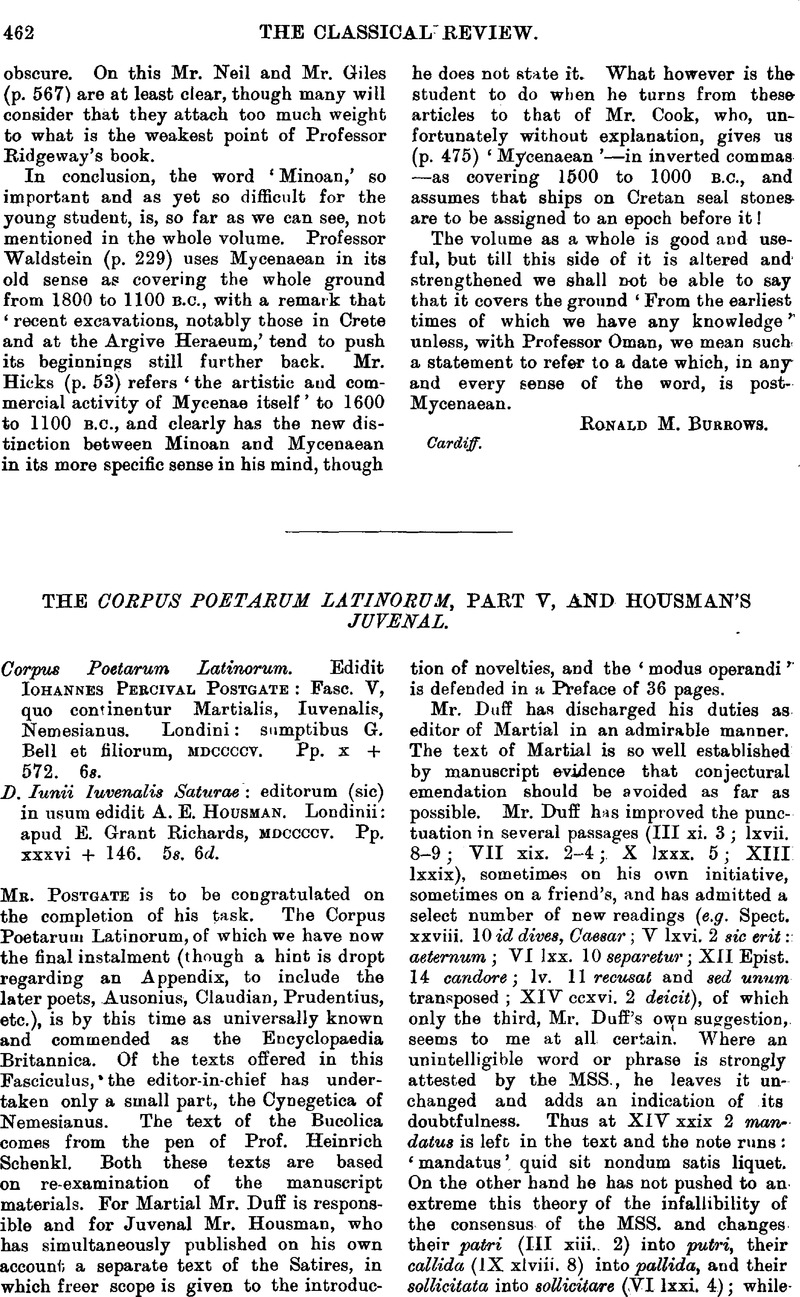No CrossRef data available.
Article contents
The Corpus Poetarum Latinorum, Part V, and Housman's Juvenal - Corpus Poetarum Latinorum. Edidit Iohannes Percival Postgate: Fasc. V, quo continentur Martialis, Iuvenalis, Nemesianus. Londini: sumptibus G. Bell et filiorum, MDCCCCV. Pp. x + 572. 6s. - D. Iunii luvenalis Saturae: editorum (sic) in usum edidit A. E. Housman. Londinii: apud E. Grant Richards, MDCCCCV. Pp. xxxvi + 146. 5s. 6d.
Published online by Cambridge University Press: 27 October 2009
Abstract

- Type
- Reviews
- Information
- Copyright
- Copyright © The Classical Association 1905
References
page 464 note 1 I suppose it is useless to express a wish that Mr. Housman would cease to speak about veteran scholars of eminence, like Buecheler, Vahlen, and Friedlaender, in that fashion.
page 465 note 1 The reading of the Pithoeanus: quisquam erit; in magno cum posces posce Latine, has been strikingly confirmed by a Graeco-Latin Conversation Manual, published in vol. iii. of the Corpus Glossariorum Latmorum, which indicates that in magno miscere (poscere) was a current phrase of the wine-table. Of course the Scholiast's quales vendunt care manciparii is quite in keeping with P's version.
page 465 note 2 Mr. Housman's sneer at ‘Ueberlieferungsgeschichte’ (Preface, p. xxviii) refers, I suppose, to the ancient transmission of texts. Apropos of this, I take the opportunity of pointing out that, if the ‘subscriptio’ and the glosses in the Montpellier (No. 212) Persius are (cf. C.R. xix. 221) in the same handwriting, which is not the handwriting of the text, this suggests three inferences: (1) the glosses represent the ‘adnotatio’ of Tryfonianus Sabinus; (2) the corrections in this handwriting come from a MS. representing his text; (3) the actual text of the Montpellier (212) MS. does not represent his text. Can some one tell us whether the ‘subscriptio’ in the Vatican Archives MS. is written by the scribe or by the ‘corrector’?




